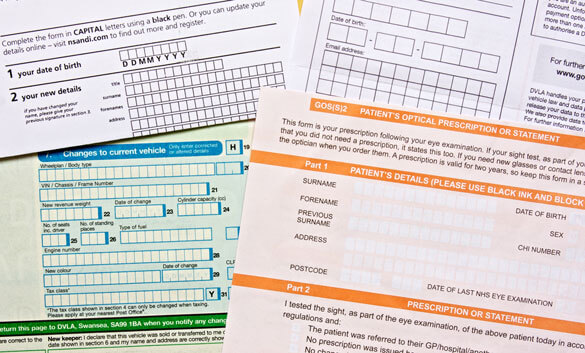
The uncomfortable world of forms
Friday 28 September 2018
Forms are a fact of modern life

Friday 28 September 2018
Forms are a fact of modern life
Have you ever found yourself conversing with someone you don’t know who asks you a string of seemingly unrelated questions – some of which might be quite personal – and yet never responds to the answers you give? Someone who offers no visual clues that they are listening to what you are saying at all, fails to acknowledge anything you ask in return, and sometimes even cuts you off in order to ask their next question?
Such an experience would be likely to leave you feeling very uncomfortable. And the chances are that you would make a polite excuse before moving away and avoiding engaging with that person again.
This is the uncomfortable world of forms.
Forms are essentially a one-sided conversation. They ask a string of questions – some more evidently related to the matter at hand than others. They cannot respond to your answers. There is no feedback – such an encouraging nod of the head, or sounds of agreement – which might indicate that you have understood the question they have asked.
All this can make it difficult for people completing your form to know if they have done so correctly. Have they understood what you are asking them? Have they filled in the correct parts of the form? The nature of the questions themselves may have made them feel uncomfortable. They may even doubt you need to know the information you have requested.
Many forms are designed to be read by machines rather than people. Such forms often have individual spaces or boxes for each letter of your answer. This can be problematic for two reasons: the first is a practical concern – what should I do if my name is too long to fit in the number of boxes allowed? But the second is perceptual – how do I feel if my personal information doesn’t conform with your form? I certainly wouldn’t feel welcome or as though I had been treated with courtesy.
In marketing, removing obstacles or objections to a sale is a great way to encourage someone to purchase from you. An overt example of this is the advert from First Direct where they address many of the commonly-held fears about switching current accounts, but this technique is often used less overtly as well.
This approach shouldn’t be confined to marketing activities, however. It should apply to all essential interactions with your business. Forms are always going to be difficult to get right for everyone, but they are a fact of modern life and are inevitable, so it’s worth spending time to make your forms as painless to use as possible.
If the forms you provide to your customers are unclear, difficult to fill in or ask questions which appear to be irrelevant, then one of three things will happen. Customers will feel very uncomfortable about sharing their information with you in this way and will take their custom elsewhere; they will feel unable to answer the questions and will give up before they finish the form; or they will do their best to answer your questions, but will make errors.
All three scenarios will cost your business money – either in lost income or in additional costs incurred in dealing with enquiries about the wrongly completed form.
If you would like help improving your business forms please just get in touch.
Recent posts
Featured posts

Hello! I’m Sarah, an independent typographic designer, helping businesses to communicate their unique selling points through printed marketing and communications.
I’ve been sharing my knowledge about design, typography, marketing, branding and printing since 2014. I hope you enjoy reading my blog.

Sarah Cowan